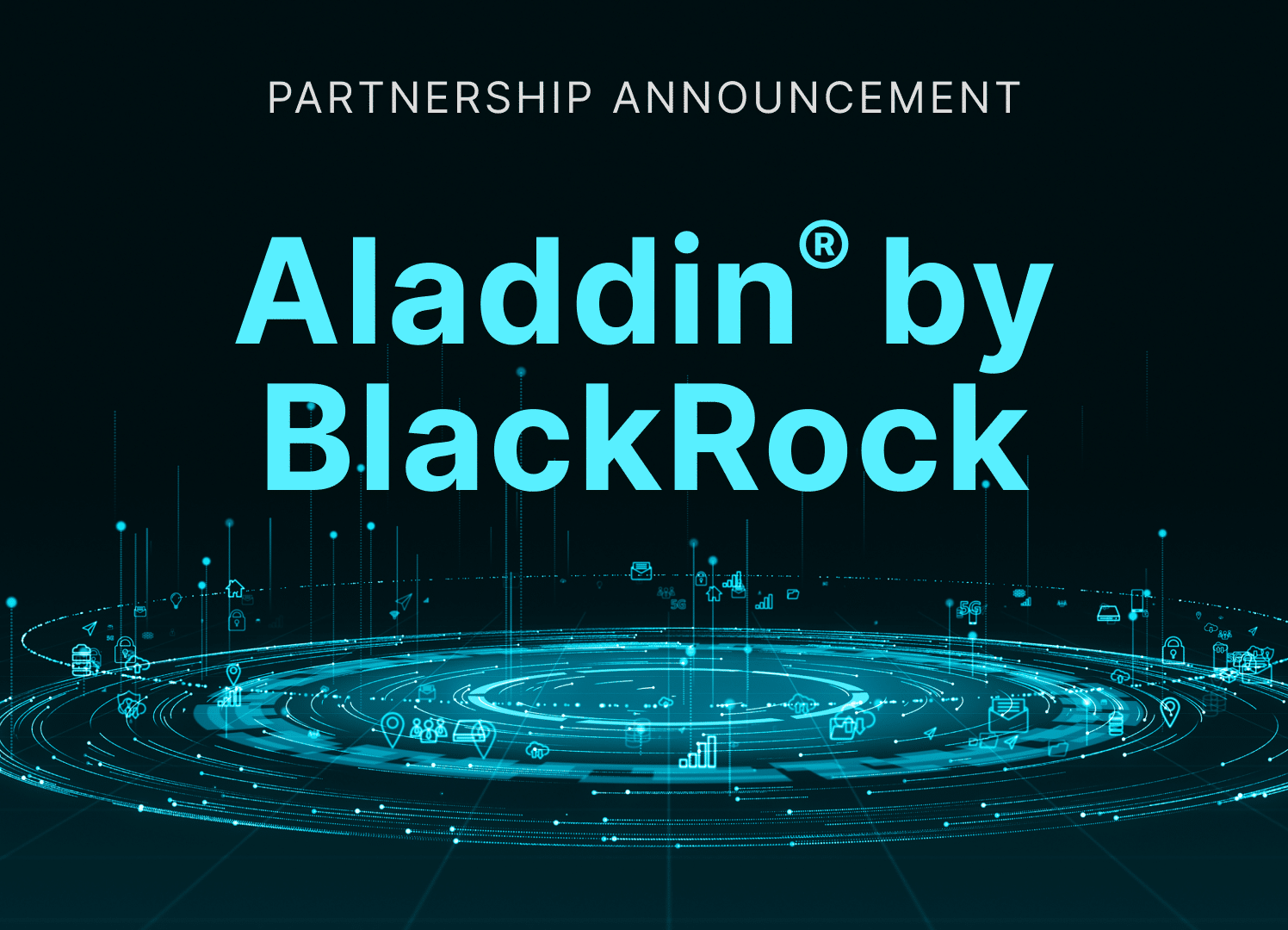The computer program used by BlackRock is called Aladdin, which stands for Asset, Liability, and Debt and Derivative Investment Network. It is a portfolio management software developed by BlackRock Solutions, the risk management division of BlackRock, Inc. Aladdin integrates risk analytics, portfolio management, trading, and operations tools into a single platform, enabling real-time management of investments. It analyzes global economic data, stock market prices, and other factors like government changes or weather conditions to support risk management and informed decision-making. Initially created in 1988 to handle BlackRock’s internal business, it has since been offered to clients and now manages trillions in assets, with estimates of $21.6 trillion as of 2020.
- Comprehensive Platform: Aladdin combines tools for portfolio management, risk assessment, trading, and operational workflows into a single system. It allows users—such as asset managers, banks, insurers, pension funds, and other institutional investors—to monitor investments, assess risks, and execute trades efficiently in real time.
- Risk Analytics: The software uses advanced models, including Monte Carlo simulations, to analyze historical data and generate statistical scenarios for equities, bonds, and other assets. This helps clients stress-test portfolios against potential events like economic downturns, pandemics, or market crises, enabling better risk management across vast asset pools.
- Scalability and Adoption: Initially built in 1988 for BlackRock’s internal use, Aladdin’s capabilities attracted external clients after the 2008 financial crisis, when risk management became critical. It now serves over 1,000 organizations, including major firms like CalPERS ($260 billion in assets), Deutsche Bank (€900 billion), and Prudential ($700 billion), managing a combined $21.6 trillion as of 2020.
- Data and Technology: Aladdin operates on a network of approximately 5,000 to 6,000 computers, with data centers like the one in Wenatchee, Washington, processing global economic data, stock market prices, and factors like government policies or weather. This allows it to handle massive, diverse portfolios across asset classes—stocks, bonds, derivatives, real estate, and more.
- Client Base Expansion: BlackRock rents Aladdin to a wide range of clients, including banks, hedge funds, and governments. For example, after the 2008 crisis, the U.S. Treasury Department tapped BlackRock Solutions to analyze and manage $130 billion in toxic assets from Bear Stearns and AIG. It also valued mortgage-backed securities for Fannie Mae and Freddie Mac, and managed $1.25 trillion in repurchasing for the Federal Reserve.
- Continuous Innovation: BlackRock enhances Aladdin with acquisitions like eFront (2019), integrating private market data for a “whole portfolio view,” and by incorporating AI, machine learning, and ESG (Environmental, Social, Governance) data. This keeps it relevant for clients managing trillions in public and private assets.
- Purpose and Function: Aladdin (Asset, Liability, and Debt and Derivative Investment Network) is a technology platform that integrates risk analytics, portfolio management, trading, and operational tools. It processes vast amounts of data—economic indicators, stock prices, interest rates, and more—to help clients make informed investment decisions.
- Connection to Housing: Aladdin doesn’t directly buy or manage physical real estate like houses. Instead, it supports BlackRock and other institutional investors in managing financial assets, including mortgage-backed securities (MBS). These are bundles of home loans packaged into investments, which BlackRock invests in on behalf of clients. By analyzing these securities, Aladdin helps provide capital to the mortgage market, indirectly facilitating home loans for individuals.
- Scale: As of 2020, Aladdin managed risk for over $21.6 trillion in assets, a portion of which includes mortgage-related investments. This doesn’t mean Aladdin owns houses, but it plays a role in the financial ecosystem that funds home purchases.
- No Direct Purchases: Aladdin is software, not an entity that can buy or own property. BlackRock, the company behind Aladdin, also does not directly buy single-family homes for rental purposes. Confusion often arises from misperceptions or conflation with other firms, like Blackstone, a separate entity with a history of real estate investment.
- BlackRock’s Real Estate Involvement: BlackRock is an active investor in the U.S. real estate market, but its focus isn’t on buying individual houses to compete with homebuyers. Instead:
- Mortgage Securities: BlackRock invests in MBS, providing liquidity to the mortgage market, which helps banks lend to homebuyers.
- New Construction for Rent: BlackRock has invested in programs to finance new housing, including purpose-built single-family rental developments. These add to the housing supply, addressing demand for rentals, but don’t involve buying existing homes from potential buyers.
- Scale of Ownership: BlackRock does not own single-family homes directly. It has stakes in companies like Invitation Homes (owning 6.7% as of recent reports, valued at about $872 million), which manages roughly 80,000 rental homes. However, this is a small fraction of the U.S.’s 140 million housing units, with only about 300,000 single-family rentals owned by all institutional investors combined (less than 2% of the 15 million single-family rentals).
- Not Outbidding Buyers: There’s no evidence BlackRock or Aladdin buys existing homes to rent out, blocking potential buyers. Claims of this nature often stem from a 2021 social media narrative misattributing actions to BlackRock. In reality:
- Institutional investors like Blackstone, not BlackRock, bought foreclosed homes post-2008 financial crisis, often in bulk, to convert to rentals. Blackstone exited much of this market by 2019, selling its stake in Invitation Homes, and later bought Home Partners of America in 2021 for $6 billion, focusing on a rent-to-own model.
- Investors target distressed or new properties, not typically competing with individual buyers for move-in-ready homes. Data from John Burns Research & Consulting shows institutional investors (owning 1,000+ homes) hold just 0.4% of U.S. single-family housing stock.
- Housing Challenges: The U.S. faces a housing shortage—estimated at nearly 4 million homes—driven by high demand, low inventory, and construction constraints from local zoning and regulations. This, not institutional buying, is the primary driver of rising prices and competition.
- Institutional Impact: While investors like Blackstone or others buy homes (often less than 3% of single-family rentals), their role is small compared to the broader market. They don’t “steal” homes from buyers; rather, they add rental options, sometimes for those unable to buy due to high prices or credit issues.
- Clarification on Direct Purchases: BlackRock, the world’s largest asset manager, has explicitly stated it does not directly buy single-family homes in the U.S. for the purpose of turning them into rentals or holding them. Instead, its real estate investments focus on other areas, such as mortgage-backed securities (MBS), multifamily properties (e.g., apartment complexes), and financing new construction for rental housing.
- Indirect Involvement: BlackRock does invest in companies or funds that own or manage real estate. For example, it holds a 6.7% stake in American Homes 4 Rent, a real estate investment trust (REIT) that owned about 59,000 single-family rental homes as of December 2023. However, this is an investment in a separate entity, not BlackRock directly purchasing or managing houses.
- Confusion with Blackstone: Much of the narrative around BlackRock buying houses stems from confusion with Blackstone, a different firm. Blackstone, a private equity giant, has been active in the single-family rental market. It founded Invitation Homes in 2012, buying tens of thousands of homes post-2008 financial crisis, often distressed properties, and later sold its stake for $7 billion in 2019. In 2021, Blackstone acquired Home Partners of America, which owned 17,000 rental homes, for $6 billion. These actions are separate from BlackRock’s activities.
- Scale of Institutional Investors: Institutional investors—firms owning 1,000+ properties—do buy single-family homes, but their overall market share is small. According to John Burns Research & Consulting, these investors accounted for just 0.4% of U.S. home purchases in Q2 2023, down from a peak of 2.4% in late 2021. Even at their height, all investors (including smaller “mom-and-pop” buyers, flippers, and second-home purchasers) made up about 25% of sales in 2023, not 44% as some claims suggested. BlackRock’s direct role is negligible, as it doesn’t buy homes outright.
- Price Influence: Institutional investors can influence local markets, particularly in specific regions like the Sun Belt (e.g., Atlanta, Phoenix, Tampa), where firms like Invitation Homes bought heavily—e.g., 90% of homes for sale in some Atlanta ZIP codes in the early 2010s. This can drive up prices in targeted areas by outbidding individuals, often with all-cash offers. However, experts like Paul Fiorilla from Yardi Matrix note that their small national market share (e.g., 3% of single-family rentals per Moody’s Analytics) means they aren’t a primary driver of widespread price increases.
- Broader Market Forces: The housing market’s challenges—rising prices, low inventory, and affordability issues—stem more from structural issues:
- Supply Shortage: The U.S. has a shortage of nearly 4 million homes, driven by decades of underbuilding after the 2008 crash, restrictive zoning, and NIMBY (Not In My Backyard) resistance to new construction, especially in states like California.
- Demand Pressure: High demand from millennials entering homebuying age, low mortgage rates in the 2010s and early 2020s, and population shifts to growing metro areas have pushed prices up.
- Interest Rates: The Federal Reserve’s rate hikes since 2022, pushing mortgage rates above 6.5%, have cooled investor activity and made homebuying harder for individuals, exacerbating affordability.
- Rental Market Effects: Firms like Blackstone, not BlackRock, have turned homes into rentals, increasing rental supply in some areas. This can ease rent pressure in theory, but in practice, institutional landlords have been criticized for steep rent hikes, high fees, and poor maintenance, per reports from Reuters and The Atlantic. Still, their impact on national rent inflation is limited compared to supply-demand imbalances.
- Misconceptions: Claims that BlackRock is “buying every single-family house” or owned 44% of homes in 2023 are inaccurate. The 44% figure, spread via social media and a Medium article, misrepresents data, likely conflating all investors (individuals, small firms, and institutions) with BlackRock alone. BlackRock’s real estate assets, valued at $60 billion in 2020, are a tiny fraction of the $36 trillion U.S. housing market.
- Impact Assessment: While institutional investors like Blackstone have influenced specific markets, the broader housing crisis is driven by supply constraints, not corporate buying. BlackRock’s role is indirect and minimal, focused on financing and investments in securities or rental-focused projects, not outbidding families for homes.



